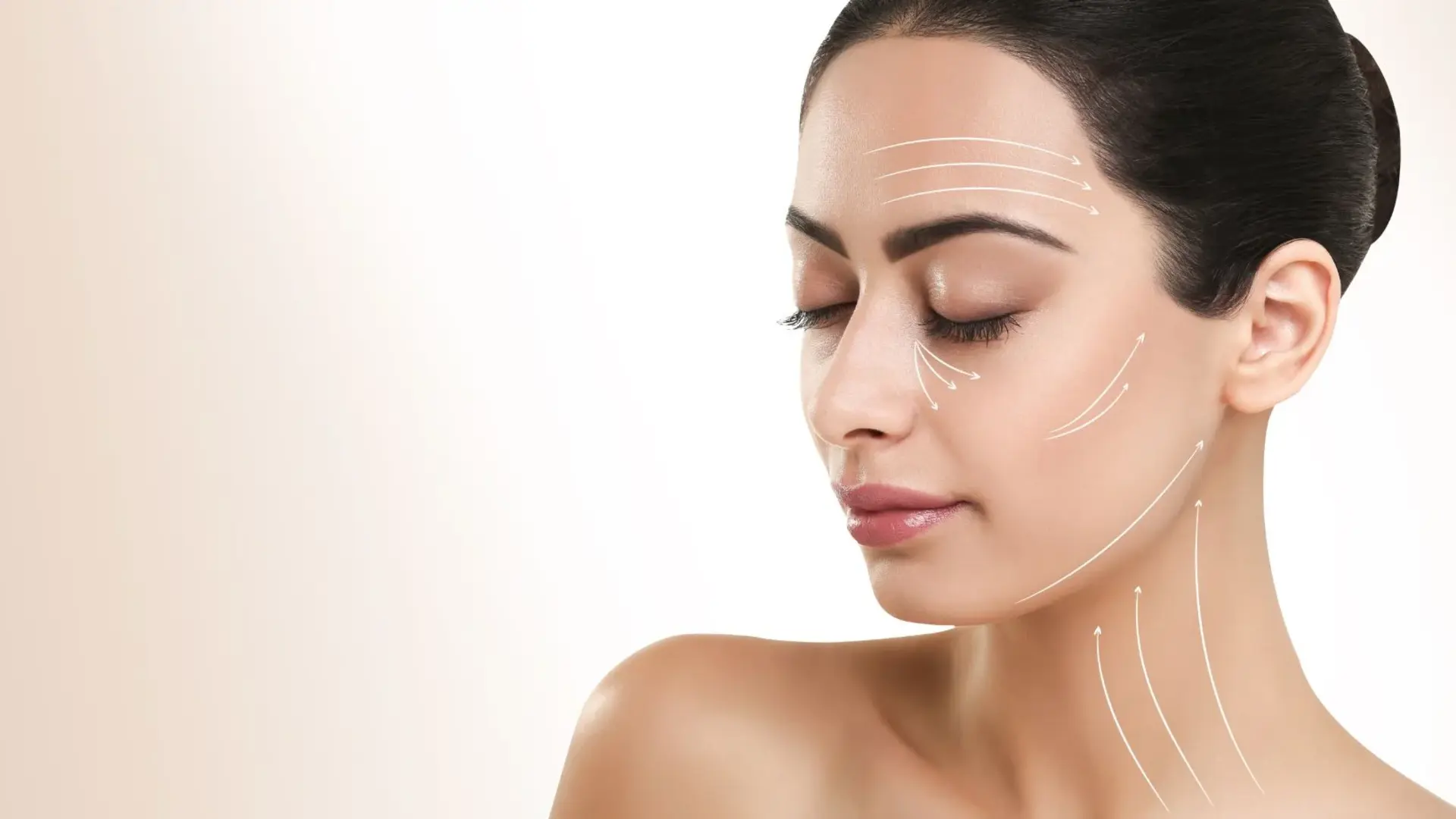18–24 months, stimulating collagen for long-term results, ideal for jawline and hands. Hyaluronic acid fillers offer immediate plumpness, lasting 6–18 months, perfect for lips and under-eyes. For reversibility, HA fillers dissolve easily with hyaluronidase.
What is Radiesse?
Radiesse is an advanced calcium hydroxylapatite (CaHA) dermal filler specially developed to restore volume, improve skin elasticity, and stimulate neocollagenesis (formation of new collagen). Different from the conventional fillers, Radiesse uniquely offers an immediate volumizing effect coupled with long-term tissue regeneration, making it a very effective option for patients desiring both immediate and long-lasting results.
The active ingredient of Radiesse is CaHA microspheres (between 25–45 microns in diameter) suspended in a gel carrier of sterile water, glycerin, and sodium carboxymethylcellulose. When this is administered into soft tissue, the gel carrier acts to provide immediate volumization, while the CaHA microspheres serve as a scaffold to stimulate the fibroblasts, enhancing collagen Types I and III production. It has been clinically demonstrated that, with collagen synthesis starting as early as 4 weeks post-injection, this may last up to 12 months, hence adding to the filler’s durability.
Radiesse is FDA-approved for treating moderate to severe facial wrinkles and folds such as nasolabial folds and marionette lines. It is also the first filler approved for hand rejuvenation, a process by which it will restore lost volume and improve skin thickness. For example, a randomized controlled trial in 2015 found that 97% of patients experienced significant improvement in hand volume after Radiesse treatment. The benefits of Radiesse are particularly pronounced in individuals aged 35–60 years, where moderate-to-severe volume loss begins to manifest.
Radiesse is a biodegradable product, being resorbed naturally in the body after some time. The beauty about Radiesse is that it is not like hyaluronic acid fillers, as it does not use a cross-linking agent such as BDDE, or 1,4-butanediol diglycidyl ether for its stability, thereby reducing foreign body reactions.
Hyaluronic Acid Basics
Hyaluronic Acid fillers are among the most used dermal fillers in the world, comprising well-known brands such as Juvederm, Restylane, Teosyal, and Belotero. HA is a glycosaminoglycan (GAG) naturally found in the extracellular matrix of the skin, contributing to hydration, elasticity, and firmness. Each HA molecule binds up to 1000 times its weight in water, making it ideal for hydrating and plumping the skin.
HA fillers are stabilized through the use of cross-linking agents such as BDDE. These increase the longevity and viscosity of the HA fillers. Highly cross-linked products, such as Juvederm Voluma XC, are used for deep volumization in the mid-face and can last up to 24 months with optimal treatment. Other products, such as Restylane Silk, have lower viscosity and smaller particle sizes, which lends them to fine lines and delicate areas, such as the vermillion border of the lips.
The flexibility of HA fillers is due to their gel rheology, which includes factors such as:
-
Viscoelasticity: this determines the product’s resistance to deformation while still allowing it to be soft.
-
Cohesivity: allows for even integration into the surrounding tissue.
Clinical studies show that HA fillers are extremely biocompatible, with a less than 0.5% incidence of adverse reactions. In addition, HA fillers are reversible by the administration of hyaluronidase, an enzyme that degrades HA molecules within 24–48 hours. This reversibility makes HA fillers quite attractive for patients seeking low-risk treatments or adjustments.
Main Differences
Radiesse and HA fillers differ in many ways: composition, mechanism of action, and treatment outcomes.
-
Composition and Biocompatibility:
-
Radiesse is composed of synthetic CaHA microspheres that act to stimulate collagen.
-
HA fillers contain stabilized hyaluronic acid, which is incorporated into the skin’s natural extracellular matrix.
-
-
Durability: The effect of Radiesse will last from 18 to 24 months, according to the site of injection and the patient’s metabolic condition. HA fillers may last from 6 to 18 months, with highly cross-linked products attaining the upper limit.
-
Tissue Integration: Radiesse forms a rigid scaffold, making it ideal for structural support and contouring areas like the jawline, chin, and temples. In contrast, HA fillers are softer and more malleable, making them suitable for dynamic areas like the lips and under-eyes.
-
Stimulation of Collagen: Radiesse acts as a biostimulator, stimulating long-term collagen synthesis. HA fillers provide immediate hydration and volumization without stimulating collagen production.
-
Reversibility: HA fillers can be dissolved using hyaluronidase. Radiesse cannot be reversed, and it requires a precise technique and experienced providers to avoid complications.
How Long It Lasts
Longevity of a dermal filler depends on various factors: filler composition, cross-linking, injection technique, and patient metabolism.
-
Radiesse: Clinical research has already documented that the results from Radiesse may last upwards of 18-24 months. The 2018 study reported a recapture rate for contour improvements of the jawline in 87% at 12 months, with recorded gradual endogenous enhancement of collagen up to 18 months. On value, Radiesse provides more to the consumer because of its longevity.
-
HA Fillers: HA fillers have varying durations depending on their specific cross-linking density and gel viscosity. Example:
-
Juvederm Voluma XC: Lasts 18–24 months in the mid-face.
-
Restylane Lyft: Lasts 12 months for deep volumization.
-
Belotero Balance: Lasts 6–9 months for fine lines. High-movement areas, like the lips and nasolabial folds, metabolize HA fillers more quickly, which shortens the durability to 6–9 months.
-
Best Treatment Areas
Based on their properties and rheological profile, both Radiesse and HA fillers have some ‘favored’ areas of treatment.
-
Radiesse:
-
Jawline and Chin: Better definition can be achieved, with a lift in patients who present with mild to moderate jowling.
-
Nasolabial folds: Effective in deep folds resistant to HA fillers
-
Hands: Restores lost volume and minimizes the appearance of veins and tendons. In clinical studies, 97% of patients were satisfied with Radiesse for hand rejuvenation.
-
-
HA Fillers:
-
Lips: Restylane Kysse and Juvederm Ultra XC provide natural augmentation with soft, flexible gel formulations.
-
Under-Eyes: Teosyal Redensity II and Belotero Balance work very well for tear trough deformities, thus decreasing dark circles and hollows.
-
Fine Lines: fine wrinkles include Juvederm Volbella and Restylane Silk to address superficial wrinkle areas without lumpiness.
-
Pros and Cons
Pros of Radiesse
-
Long-Lasting: Can last up to 24 months upon collagen stimulation.
-
Bio Stimulation Effects:Improves Collagen to provide natural rejunention.
-
Ideal Indication for Contouring: Structural supports for contouring in jawline, chin, hand areas
Cons of Radiesse
-
Permanent Filler Agent: Once done, correction can either take time to settle naturally or require some surgical time.
-
Limited for Dynamic Areas: Not suitable for the lips or under-eyes due to its dense composition.
HA Filler Pros
-
Immediate Results: Visible improvements right after injection.
-
Reversible: Can be dissolved with hyaluronidase for safety.
-
Versatile: Can be used for fine lines, volume loss, and delicate areas.
HA Filler Cons
-
Shorter Duration: Lasts 6–18 months, thus needing to be frequently maintained.
-
High Metabolism Impact: Faster breakdown in dynamic areas of the lips.
Choosing the Right One
The choice between Radiesse and HA fillers should be based on the aesthetic goals of the patient, the site of treatment, and the risk tolerance of the individual.
Radiesse is perfect for patients who wish to have long-lasting structural improvements and stimulation of collagen. Patients in their 40s and 50s showing a lot of sagging on the jawline will require the robust support from Radiesse. In contrast, younger patients, in their 20s and 30s, presenting lip augmentation or even tear trough corrections, will show better results with HA fillers.





